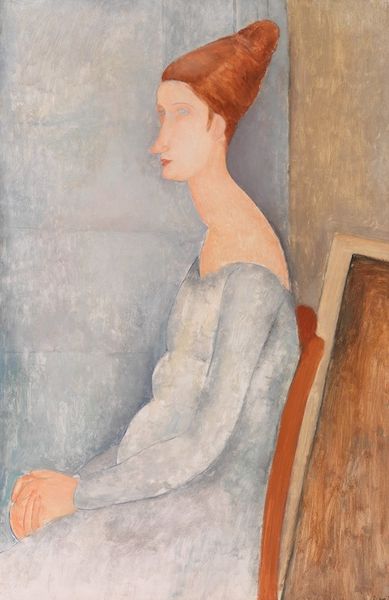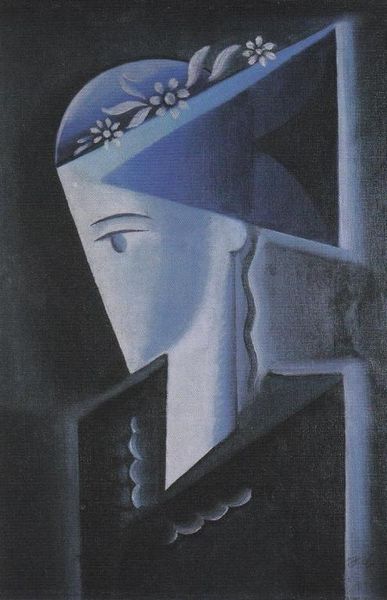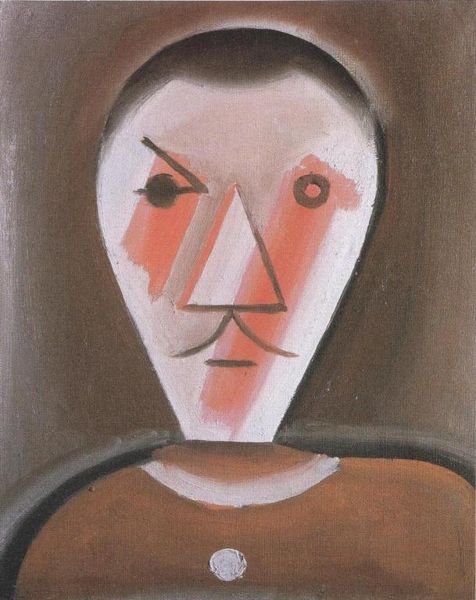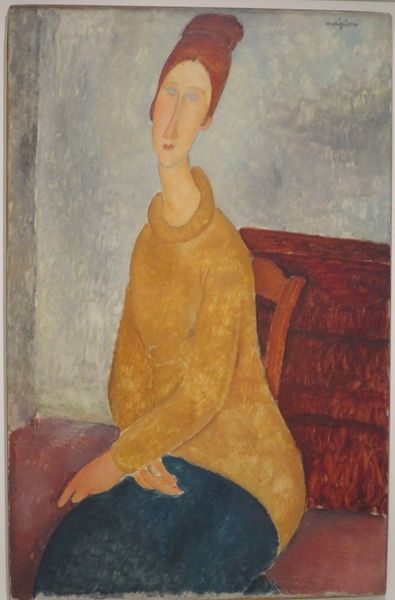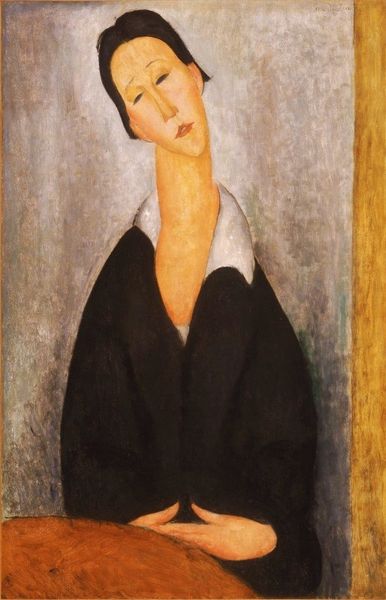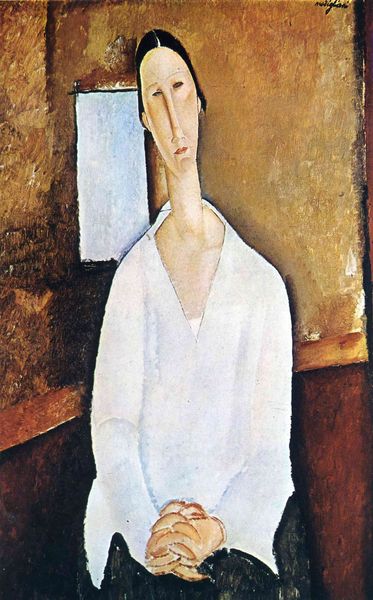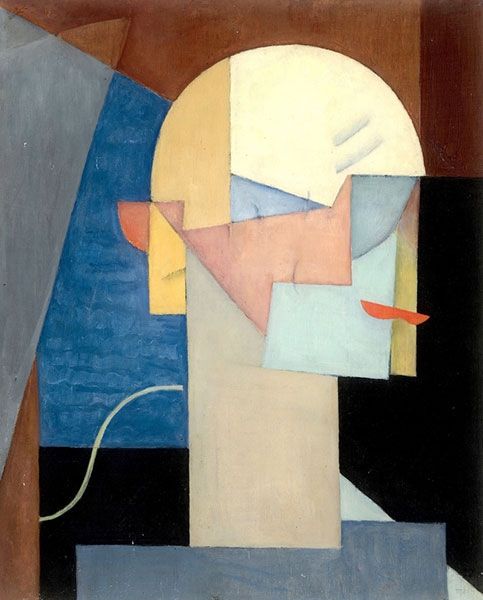
painting, oil-paint
#
portrait
#
painting
#
oil-paint
#
figuration
#
oil painting
#
expressionism
#
portrait drawing
#
facial portrait
Copyright: Public domain
Curator: This is Josef Capek's "Hlava chlapce," or "Head of a Boy," painted in 1916. It's an oil painting, fairly small in scale, that offers a striking profile view. Editor: It's so austere. The pallid skin, the simplified form...it almost feels like a death mask, despite the upward gaze. There’s something unsettlingly clinical about it. Curator: The lack of ornamentation definitely contributes to that feeling. Capek was working during a period of intense upheaval in Bohemia. Think about the rise of industrialization, the beginnings of mechanized warfare… Artists were grappling with representing the dehumanizing aspects of modernity. Editor: So, how does that context manifest in the actual production of the piece? The surface texture, for instance… There’s a clear materiality to the paint, especially in the background. Was that a common application technique, or are we seeing something specific to Capek's process? Curator: The visible brushstrokes, the slight impasto – these details counteract the clinical feeling you mentioned. Capek wasn’t simply reproducing an image; he was emphasizing the hand of the artist, the labor involved in its creation. Also notice the contrast between the textured background and the smoother surface of the face. Editor: A deliberate emphasis then, creating a sense of disconnect. I’m curious about how this piece was received. Would this have been displayed in a salon setting, alongside more traditional portraits, or did it circulate within specific avant-garde circles? Curator: Capek was a founding member of the Group of Fine Artists, who championed cubism. He moved within relatively progressive artistic and intellectual circles, so it likely found an audience ready for such stylistic experimentation. These artists sought alternatives to established academic conventions and institutional venues. Editor: So, challenging those institutions and expectations through materiality, form and technique. I see now how his choice of subject is part of this, the starkness emphasizes a broader critical commentary. Curator: Precisely. And it is through pieces like this one that Capek not only expresses his individual artistic approach but challenges the prevailing notions of art and representation at the time. Editor: That context really illuminates my initial, rather visceral response. It makes me think about the relationship between art, society and, maybe, unease during wartime. Curator: Exactly, it is through its formal properties and historical placement that it gains meaning.
Comments
No comments
Be the first to comment and join the conversation on the ultimate creative platform.

